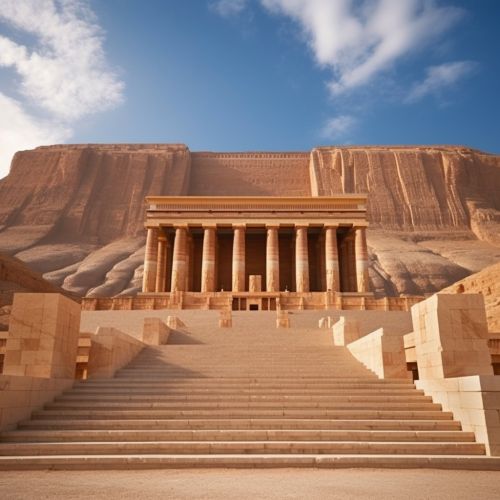Hatshepsut
Early Life
Hatshepsut was born in the 15th century BC, the eldest daughter of Thutmose I and his primary wife, Queen Ahmose. Her birth marked a significant event in the history of ancient Egypt, as she would later become one of its most renowned pharaohs.


Ascension to Power
Upon the death of her father, Thutmose I, Hatshepsut's half-brother Thutmose II ascended to the throne. As was customary in ancient Egypt, Hatshepsut married her half-brother to solidify his rule. However, Thutmose II's reign was short-lived, and upon his death, Hatshepsut assumed the regency for her stepson, the infant Thutmose III.
In the seventh year of her regency, Hatshepsut took the unprecedented step of declaring herself pharaoh. This was a bold move, as women rarely held such a position in ancient Egypt. She justified her ascension by claiming divine birth and appointment, stating that the god Amun had chosen her to rule Egypt.
Reign
Hatshepsut's reign is marked by a period of peace, prosperity, and monumental building. She initiated ambitious building projects, most notably the Mortuary Temple of Hatshepsut at Deir el-Bahri, which is considered one of the architectural masterpieces of ancient Egypt.
Under Hatshepsut, Egypt's economy flourished. She reestablished trade networks that had been disrupted during the Hyksos occupation of Egypt during the Second Intermediate Period, notably the land of Punt.


Death and Legacy
Hatshepsut died in the 22nd year of her reign, and Thutmose III, her stepson and co-regent, became the sole ruler of Egypt. After her death, Thutmose III and his son Amenhotep II attempted to erase Hatshepsut's legacy, defacing her monuments and removing her name from historical records.
Despite these efforts, Hatshepsut's impact on Egypt is undeniable. Her reign was one of the most prosperous and peaceful in Egypt's history, and her ambitious building projects left a lasting architectural legacy.
